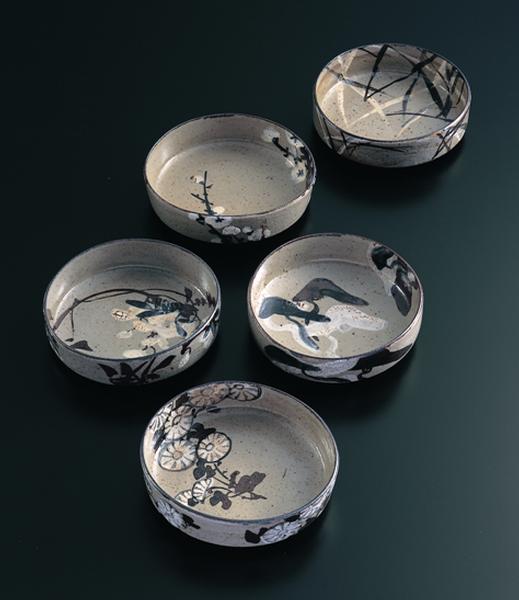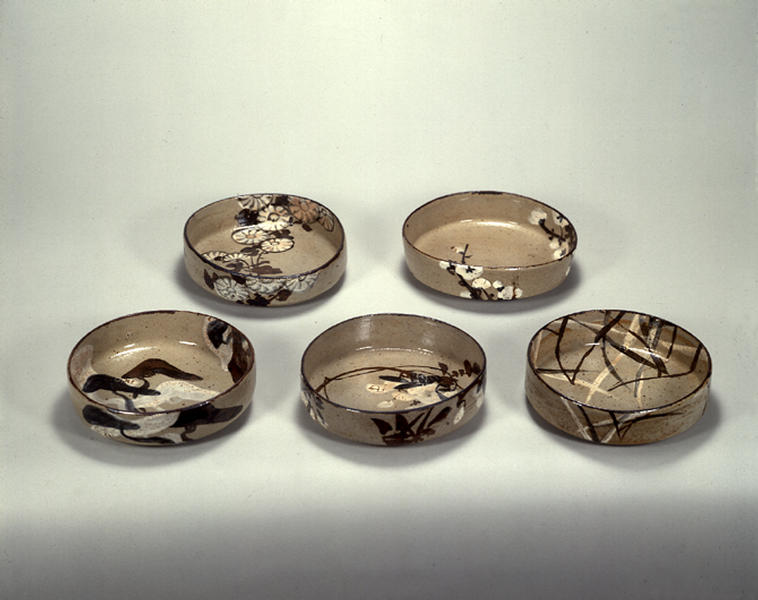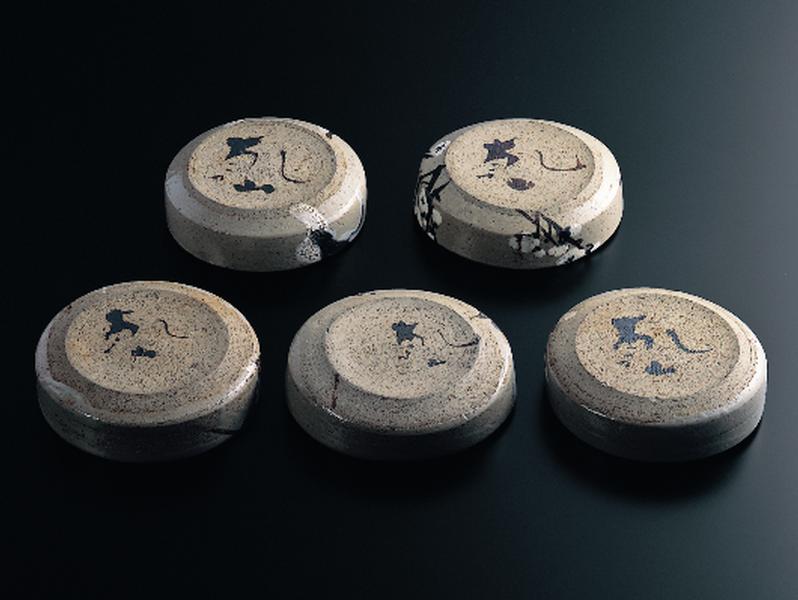乾山銹絵絵替向付
- 江戸時代
- 18世紀
銹絵染付絵替向付 五客
銹絵染付絵替向付 五客 図録解説
丸向付とも呼べる円形の五客組向付。銹絵、染付、白泥を用いて、それぞれに松、梅、藤、菊、薄を描いています。口縁に銹絵で口紅を施し、透明釉を掛けて高火度焼成されています。
底は平底で、手取りを考えてでしょうか、角は面取状に削って成形されています。土見せの底に、銹絵で大きく乾山銘が記され、淡灰色のやや粗い白土系の素地が確認できます。薄手にロクロ成形されているためか、器に歪みが生じているものや、底が反っているものが見られます。ここに見られる松の図柄は、東京・出光美術館所蔵の銹絵染付金銀白彩松波文蓋物の蓋に描かれているものとよく似ています。
さらに、文字性を残す乾山銘や、No.10の四方鉢と同じ釉剥れの状態(松や藤の図柄)などを総合すると、この向付の製作時期も二条丁子屋町時代の初めの頃から鳴滝窯時代にまでさかのぼる可能性が高いと考えられます。一見何の変哲もない拙作のように思える向付ですが、見るごとに魅力は増し、料理を盛ったときの絶妙のコンビネーションを目にするとき、その魅力は頂点に達するのです。
Mukozuke Dishes with Various Designs (Set of 5)
Mukozuke Dishes with Various Designs (Set of 5)
This set of five round dishes is of the style known as maru mukozuke, round mukozuke. Using underglaze iron and indigo as well as white pigment, the decorator painted a different design on each: pine, plum, wisteria, chrysanthemum, and silver grass. The rims were edged in underglaze iron before these pieces were coated with a transparent glaze and fired at a high temperature.
The base is flat; the angle between it and the sides has been beveled, perhaps to make the dish easy to hold. The unglazed base has a large Kenzan signature in underglaze iron; we can also confirm a rather grainy, pale gray, white-type body. Perhaps because these are thin walled and wheel thrown, some are somewhat distorted or have warped bases. The pine tree design here is quite similar to one painted on the lid of the Lidded Box with Pine and Waves in the Idemitsu Museum of Art, Tokyo.
The calligraphic Kenzan signature and the peeling of the glaze (in the pine and wisteria designs) as seen in the square bowl (cat. no. 10) suggest that these mukozuke are likely to date from the Narutaki to the early Nijo Chojiyamachi period. While appearing perfectly ordinary at first glance, the fascination of these dishes increases with each viewing, culminating when food is served in them, an exquisite combination.


